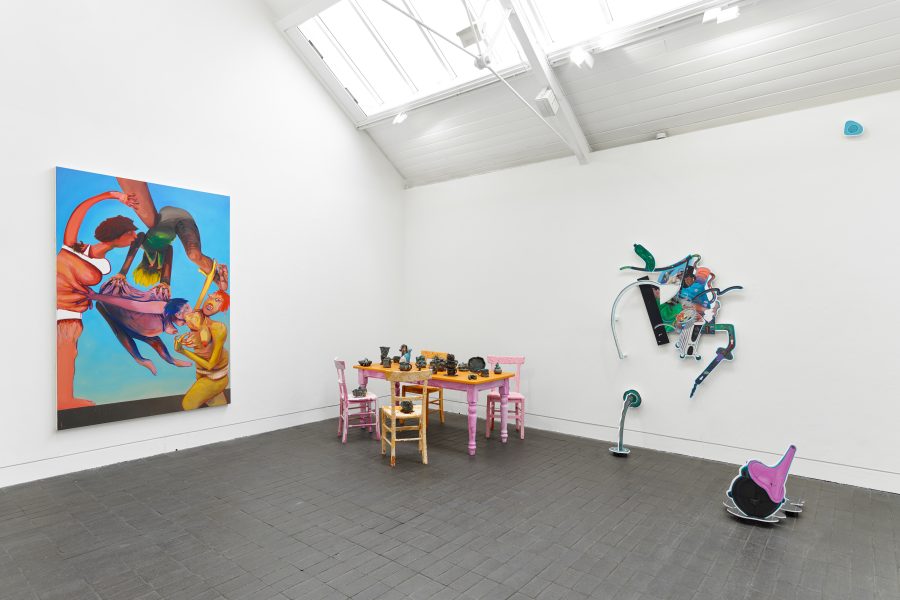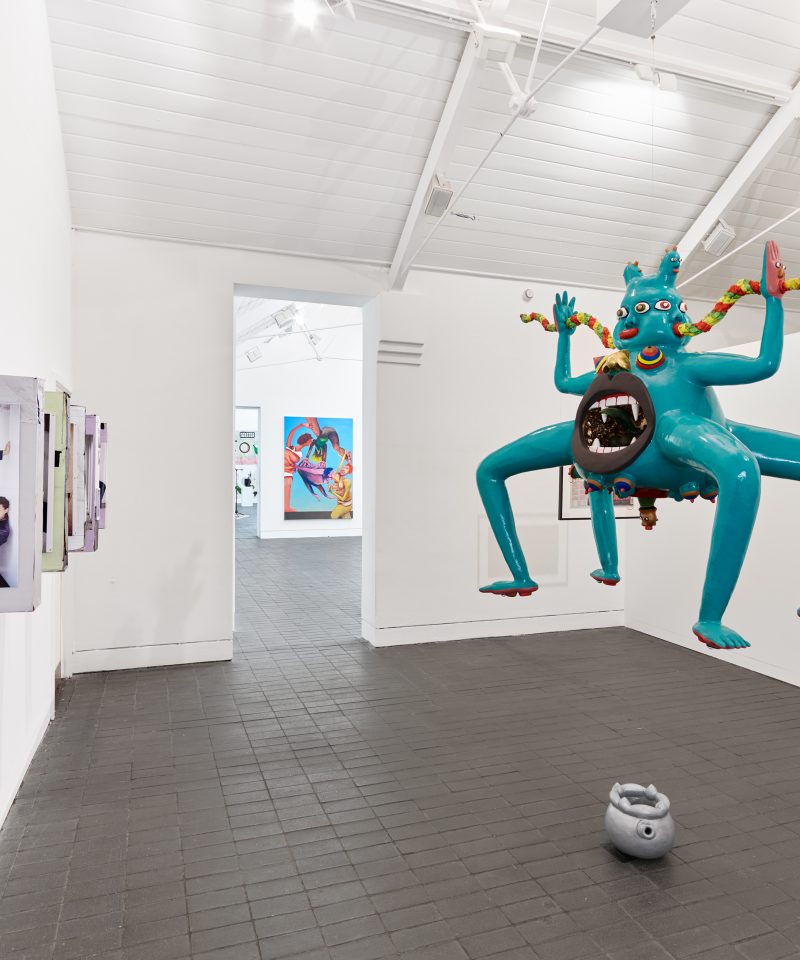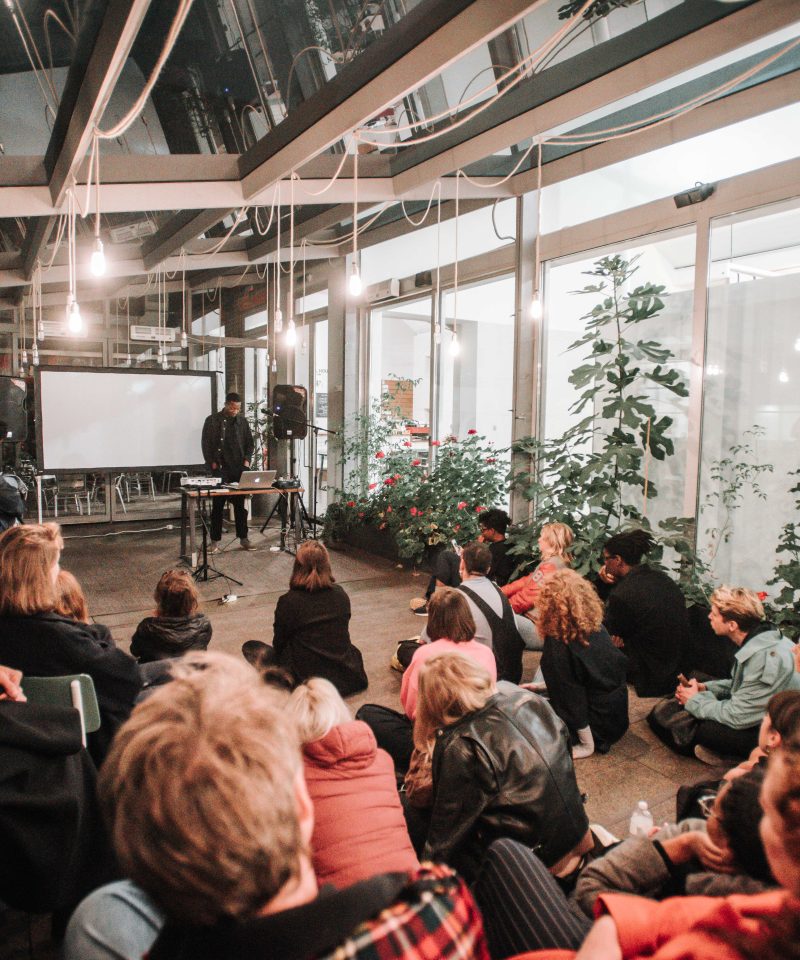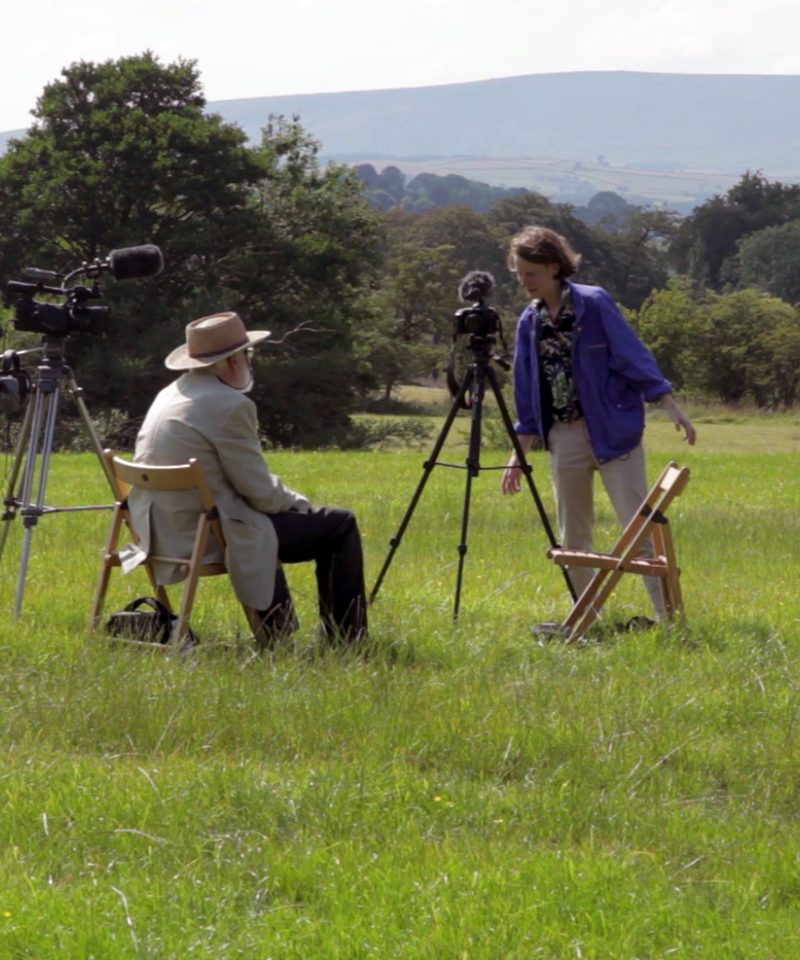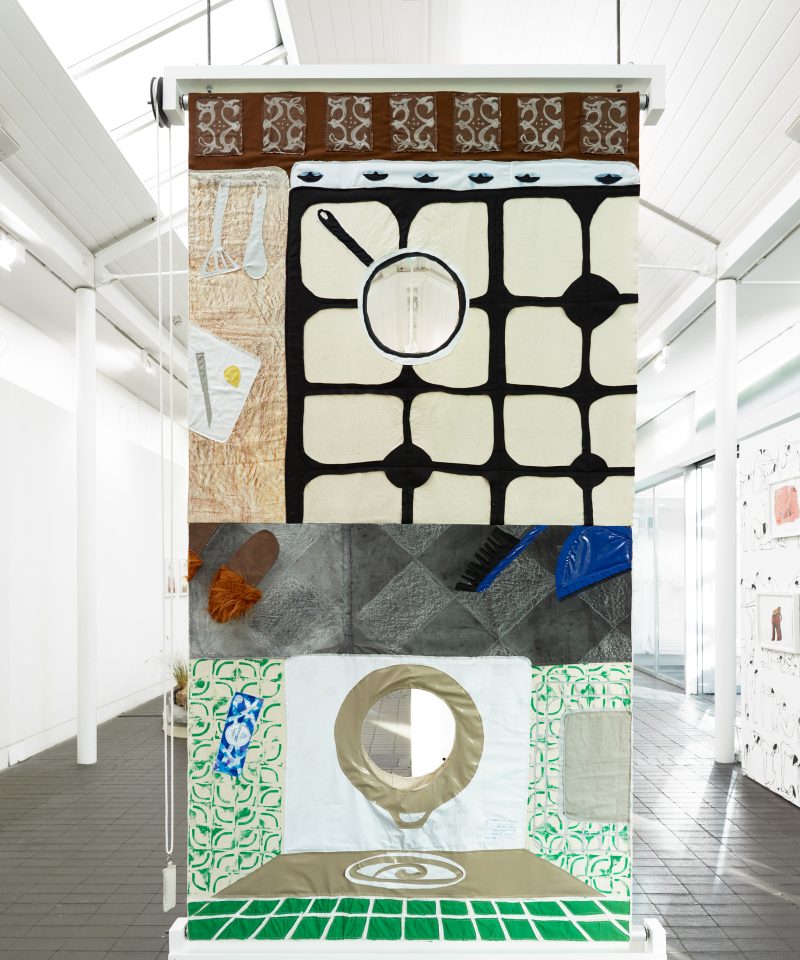A response to Survey at BALTIC Centre of Contemporary Art (5 July – 29 September 2019)
At a time of enduring austerity, ever-increasing cuts to the arts and a shift towards nationalism and right wing politics, artists and cultural producers have needed to find new strategies for surviving these hostile times. Whether through building new networks of solidarity, attacking institutions and the dangerous status quo they perpetuate, or by bravely platforming private conflicts in the public gallery space, many of the artists in Survey demonstrate not only how to survive but also how to challenge, offer alternatives to, and flourish in the hostility and confusion of our present times.
Upon entering Survey on BALTIC Centre for Contemporary Art’s ground floor the viewer is confronted by a diverse array of works from 15 early-career artists. From floor to ceiling and from wall to wall the gallery teems and bristles with images, objects and artefacts. First impressions are of an upturned Brobdingnagian toy box but, upon investigation, certain themes – (dis)embodiment; dystopian and utopian visions; visual excess and information glut – gradually start to emerge from the colourful maelstrom. A significant theme in the exhibition, and a site of conflict with the establishment, pivots around issues of identity. In Flo Brooks, Nobody feels right, so why am I any different?, a frenetic melee of everyday objects and activities – from cleaning products and electric heaters to DIY and washing dishes – defy the stereotypical, sexual division of labour in the home. Through doing so the work bespeaks of a spatial experience of gender as fluid, non-binary, complex and, at times, difficult. This visceral web of objects, bodily parts, and gestures – connected through a series of unsound, semi-sentient, occasionally blocked pipes – spill out of the frame and into the white cube of the gallery, wrestling with what is reviled as taboo, and thus hidden by architectural design, through the metaphor of the home-as-self. Another work which explores the subjective (re)construction of identity is Ashley Holmes, Good To Us, in which a kaleidoscopic montage of images – chosen by social media algorithms and from Holmes’ own accumulated material – flash across a large screen accompanied by a score of appropriated, sample-based music. This assault of sound and vision produces an intense, overwhelming sensory experience, as though the algorithms are accelerating this augmented reality and the personality it in/forms.
Ashley Holmes is not the only artist in the exhibition to critique how the internet and social media fundamentally manipulate our consciousness. In Thomas Goddard’s The Word of Mouse (grok your cornea gumbo) the lines between reality and artificiality, and consumer and consumed, blur in a dizzying, catatonia-inducing frenzy of consumption and desire. Set in the infinite loop of an Instagram feed, the only respite in the films’ visual siege comes towards the end (or is it the beginning?) as weird, amorphous creatures, reminiscent of The Stuff, begin to emerge from the bottom of the screen, growing and filling the space while an ominous soundtrack of 16-bit bleeps and whirs herald the coming singularity.
In contrast to the disembodied digital self of the post-internet generation, other artists in the exhibition explore the very physical, visceral and haptic experience of embodiment itself. In Emma Cousin’s painting, Song Drapes, four female bodies pinch, grasp, lean and latch onto one another in a wheel of push-and-pull and succor-and-despoil. These anonymous representations of female stereotypes with blank faces are rendered in loose, heavy oils which mimic the stretchy, visceral experiences of inhabiting an ageing female body. In a second work, Arpeggios, Cousin completely covers one wall of the gallery with lines of bodies in various poses, all surveying one another, in a display reminiscent of a voyeuristic alphabet.
As with any study or sample of activity, Survey reflects as much upon the commissioners of the study, their frameworks, networks, and contexts, as it does upon the subject of the study itself. It is important to note the slightly lower representation of regional artists in the exhibition (eight out of fifteen are London based) and all are art school/university educated. 11 are graduates of universities based in London (Goldsmiths, Royal College, etc) and all have at least one university degree. The privilege of an art school education is a huge capital boon to an individuals’ cultural, educational and social resources – the largest three factors influencing social class. All of the artists selected for Survey have this experience in common.
One substantial contribution from an artist based outside of London is Anna Raczynski. Her experimental documentary film, The Movie Makers, documents the amateur move-making club ‘The Pendle Movie Makers’ which is based in the small town of Colne in East Lancashire where Raczynski lives and works. Through her observations, archival material from the club, and interviews with its members, Raczynski explores not only the history of the club but also the ways in which relationships – sometimes with people of very different life experiences and backgrounds – are built through spending time together filming, interviewing and observing the world around them.
The optimism of The Movie Makers and its hopeful spirit of communal potential in the face of national disaster reverberate in Chris Alton’s work, A Hollywood Film In Which Climate Change Is Averted. The gleaming satin banner – reminiscent of ones by a trade union or found in a community hall – hangs above the gallery space like a beacon of potential for the collective imagination. The banner depicts a monolithic, modernist cinema – a real and metaphorical site of projection and mass cultural consumption – with the title emblazoned across its front. A Hollywood Film In Which Climate Change Is Averted offers a gentle, playful invitation to reimagine the singular narrative of the disaster movie – to exercise imagination, creativity and collectivity in combating the immobilising effects of shock and awe.
Whilst there is no singular theme, topic, or mode of practice that characterises all of the works in Survey, there is a common spirit which runs throughout the exhibition: of discontent, defiance and youthful resistance. By platforming subjective experience, pioneering difference and exploring alternative ways of living, many of the artists represented in Survey offer much-needed challenges to the hegemony and authority of the so-called cultural establishment. In this time of significant social and political upheaval, where public misogyny, transphobia and racism are on the rise, Survey epitomises the important role contemporary art has to play in challenging the norm; of defying easy interpretation and assimilation; and of providing alternative ways of seeing and engaging in order to develop greater empathy with one another and with the larger world we are a part of.

